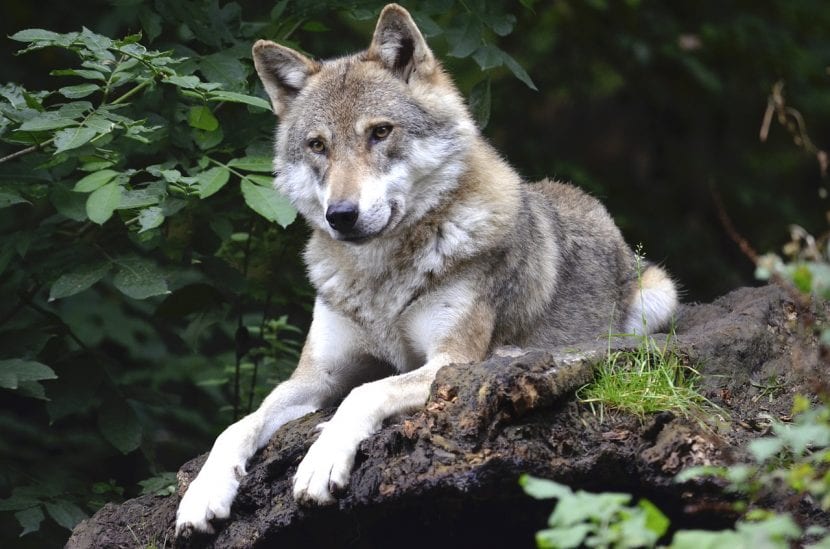
Humanity has always had divided feelings with him wolfOn the one hand, you admire his strength, his endurance, his speed and his instinct for survival, but on the other, he is doing the impossible to eradicate him from the world, putting him at serious risk of extinction.
Although conservation measures are being carried out today, the sad reality is that this beautiful animal could have great problems surviving this century.
What is the wolf like?
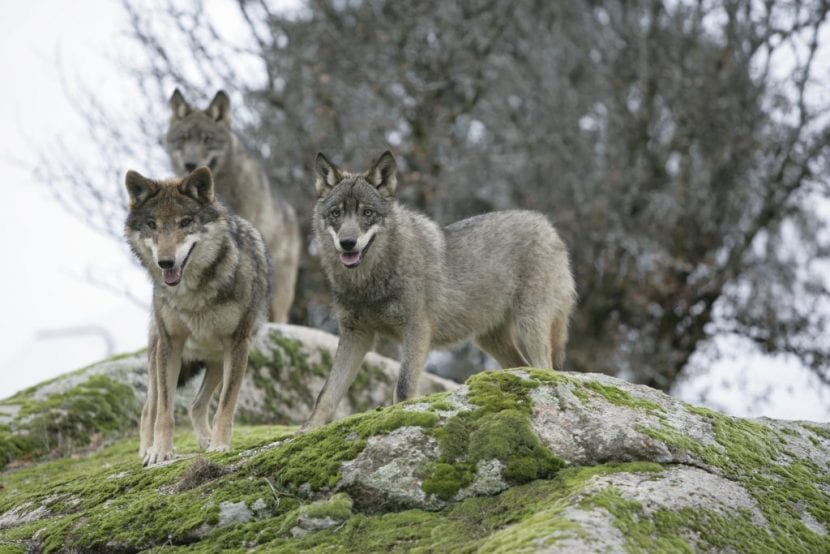
Our protagonist, whose scientific name is Canis lupus, it is a predatory carnivorous animal, that is, it hunts other animals for food. They live in family groups in forests, mountains, tundras, taigas, and grasslands of North America, Eurasia, and the Middle East, where they were abundant in the past.
It is characterized by having a size that can range between 32 and 70kg, and 60 and 90cm in height depending on the variety.The smallest being the Arabian wolf: the female can weigh only about 10kg. It measures between 1,3 and 2 meters from the snout to the tip of the tail, which is about a quarter of the total length of the body.
It is made by and to survive: its body is muscular and athletic, capable of reaching speeds of up to 65km / h in a chase. It has a narrow chest and sturdy legs that allow it to jog at 10km / h.
Between the fingers it has a small membrane that allows it to move without making a lot of noise, so it can get very close to its prey without being heard. Its hind legs are longer, and the front legs have a vestigial fifth toe. The claws are dark in color, not retractable.
The coat is made up of two layers: the first repels water and dirt, and the second is a dense undercoat that protects it from water and keeps it insulated.. This becomes very abundant in late spring or early summer, so that is when the animal rubs the most against the trunks of trees, rocks and other objects to promote hair loss, which can be gray, white , red, brown, black, or mixed with each other.
How do you live?
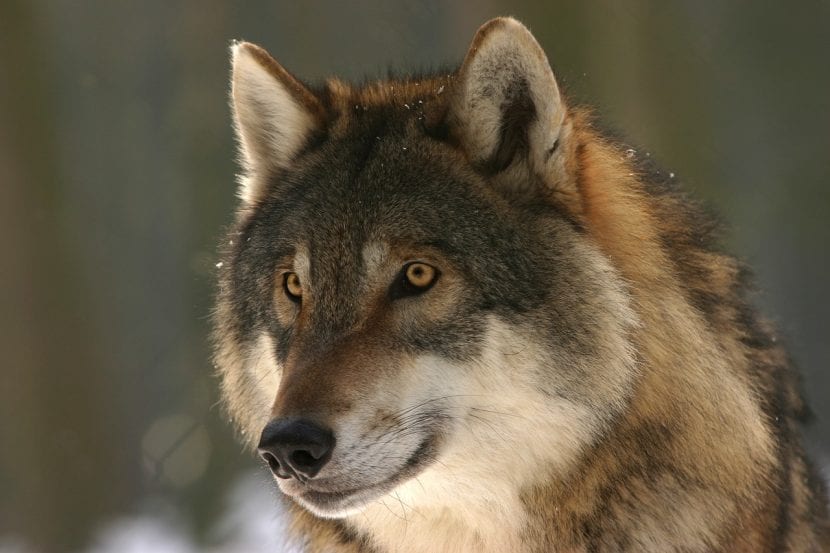
The wolf lives with his family, in burrows that they find in their natural habitat. To feed, hunt animals both day and night, always in groups. Its prey is usually rodents, but it is also capable of trapping larger animals, such as pigs, sheep, deer, reindeer, horses, elk, bison or yaks. Due to this, it has been and continues to be the canid most persecuted by humans.
They reach sexual maturity at approximately three years of age, which is when they are forced to leave the family nucleus and form their own family. Once she finds a mate, at 63 days she will have her first four or six cubs. These little ones will remain in the burrow until they are five weeks old with their mother. After that time, accompanied by their parents, they will leave their lair to look for some food, while their loved ones take care of them and educate them.
When the cubs reach two months, they will begin to change the color of their fur, going from black to that of their variety. At this age they will be taken to a safe place where the adults can hunt having the peace of mind that the little ones will be fine. After a few weeks, they will be the first to eat a bite of the prey.
With eight months, they will begin to participate in the hunt. However, the death rate is very high: they can be hunted by the brown bear, black bear, coyote, fox, cougar or other wolves, as well as by people.
What is the distribution of the wolf?

In this image you can see where the wolf lives (in green) and where it has been extinct (in red). It was once one of the most successful mammals, but due to the destruction of its habitat and hunting, its population has suffered a significant reduction. From 1982 to 1994, it was included in the list of endangered animals of the International Union for Conservation of Nature
Fortunately, Thanks to breeding programs and re-colonization, in 1996 the IUCN reduced the risk status of this animal, becoming of less concern. Still, we cannot be fooled: although the situation has improved, in some areas it is still very serious, as in Spain.
The situation of the Iberian wolf
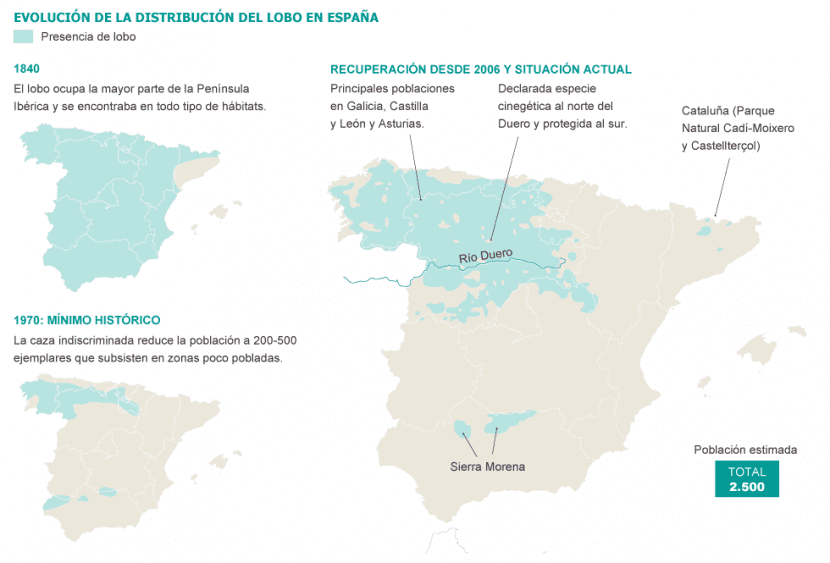
Image - Elpais.es
The Iberian wolf is very threatened in the Iberian Peninsula. In 1970, an estimated 400 or 500 individuals remained. Until that year it was considered a plague that had to be eliminated at all costs; even the government paid a reward for seeing him dead. Today traps are still being set, which are illegal, but the law still allows hunting.
Although the Spanish attitude towards this animal is changingThanks above all to the great Spanish defender of nature, Félix Rodríguez de la Fuente (1928-1980), who earned the respect and affection of millions of Spaniards for his documentary series "El Hombre y la Tierra".
More than half of the total population of the 2900 Iberian wolves that are estimated to exist live in the north of Castilla y León, and less than 35% in Galicia. Some populations are in the Sierra Morena (Jaén and Cuenca). Despite the danger, little by little they are recovering: they are also beginning to be seen in Teruel and Guadalajara, so that they are no longer considered endangered animals.
Why is it persecuted?
Until 1988, Iberian wolves hunted about 1200 horses and donkeys, and about 450 cows and sheep, representing a loss of 720.000 euros.. Those figures are obviously higher today. The farmers are very upset with them, but I think it must be borne in mind that they only do what they have to do, what their instinct dictates.
Humans are invading the territory of animals that have been living on the planet much longer than we have.. We have to know that we are not better than any of them, nor are we worse. We are simply one more animal, one more piece of the enormous puzzle that is life on Earth.
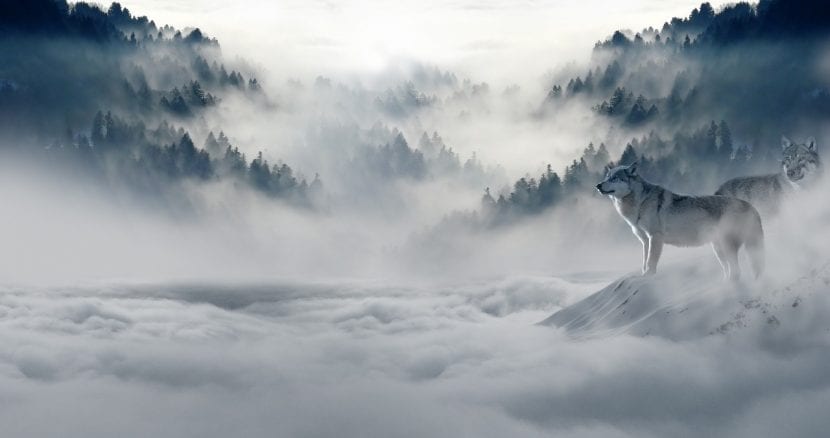
When we are aware of this, then both wolves and other animals will be able to breathe easy. Meanwhile, the strongest animals, those with which any human could not defend himself without weapons, such as the Asian tiger, the African lion, the wolf in Spain or the sharks, are very threatened.
To finish, we leave you this video with the fantastic howl of the wolf. We hope that videos like this can continue to be made ... always.